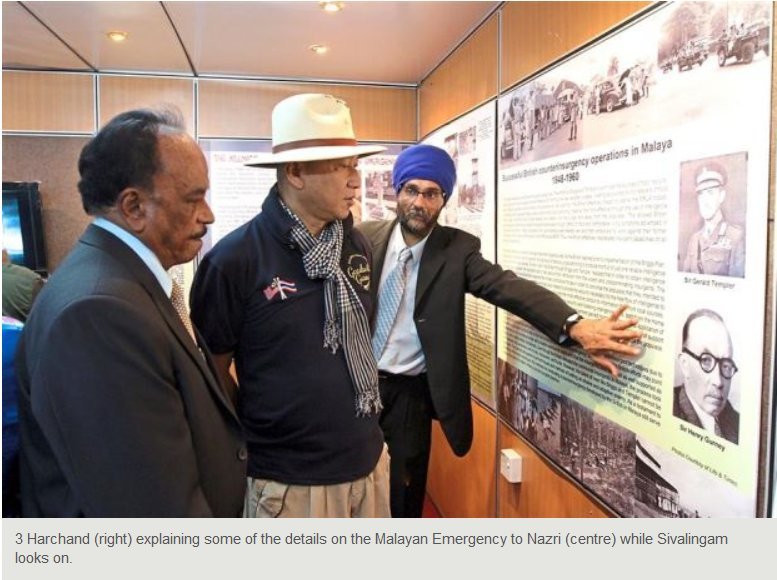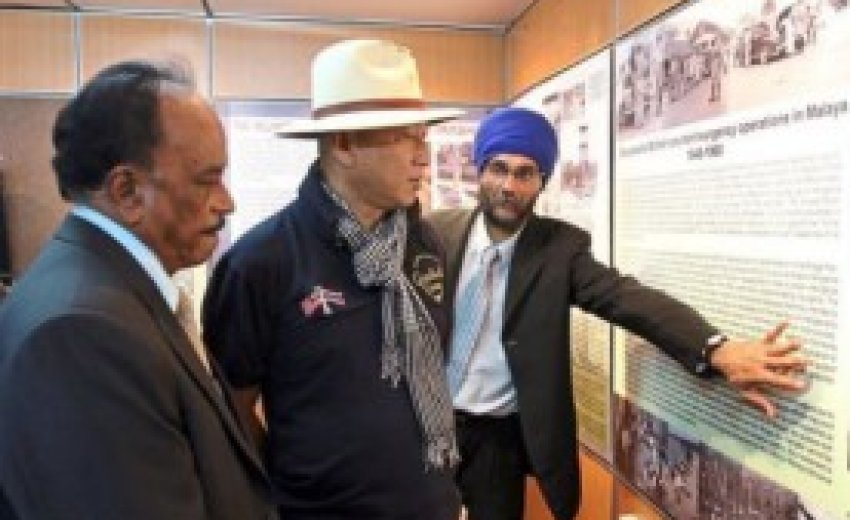
THE blood spilled by those who rallied to defend the country (then called Malaya) against communist terrorists during the Malayan Emergency will never be forgotten.
With the completion and opening of the Malayan Emergency Monument and Gallery at Sungai Siput Estate, it is the hope of the Malaysian Palm Oil Association (MPOA) Perak to not only commemorate, but to preserve this place of historical interest.
The gallery also provides information about the 12-year-long conflict that started here.
Working together with the association was historian Harchand Singh, who had begun gathering in-depth information on the Malayan Emergency in 2006.
He said the gallery was the first of its kind in Malaysia, as no such place had been built before to educate people on the conflict that took place from 1948 to 1960.
“During my research, I had interviewed lots of villagers living around the estate, and it led me to this place where the gallery is now located.
“This place was formerly known as Phin Soon Estate, where the estate manager was shot by guerrillas of the Malayan Communist Party on June 16, 1948.
“This killing, along with two other European planters, was the first spark that ignited the war in Sungai Siput, and the Emergency was declared on that day itself in Perak.
“I found a lady who actually saw the whole thing, and I got a lot more interesting facts from several other witnesses here, and that was how it all started,” he said during the soft launch of the monument and gallery here on Saturday.
Harchand added that he had to travel frequently to the United Kingdom and Australia to complete his research.
“There isn’t much you can find on the conflict in national archives, so I had to access the archives of these two countries, who had helped Malaya win against the communists then.
“I finally completed everything in 2010,” he said, adding that he was hoping to bring in artefacts collected during the conflict and expand the gallery in the near future.
MPOA Perak chairman R. Sivalingam said it took them a while to gather enough funds for the project, which cost around RM100,000.
“For now, our gallery is open for visits by appointment only because we need to see how the response is.
“A tour package is also available for visitors coming in groups of 10 and more.
“This will include visits to the monument, gallery, the tapioca flour factory which was attacked and ransacked many times during the Emergency, the caves where communists used to hide in, and three wells that contributed greatly to the lives of the villagers here back then,” he said, adding that this tour will take around one hour.
All visits are free of charge.
The monument and gallery, which were successfully constructed in 2010 and 2011 respectively, were merely hidden gems waiting to be discovered as both Sivalingam and Harchand were waiting for the right time to open it.
On Saturday, almost five years after its completion, Tourism and Culture Minister Datuk Seri Mohamed Nazri Aziz left his signature on the commemorative plaque to launch the historical destination.
Nazri said he will look into having this gallery placed in their tourist brochures and calendars, and hoped that the Perak government will do their part in creating a historical trail package to attract tourists.
“Such packages will not only put this place on the tourist map, but also educate the public on the important role that Perak played during the development of this country,” he said.
Those wish to visit the monument and gallery can call 05-545 3560.
